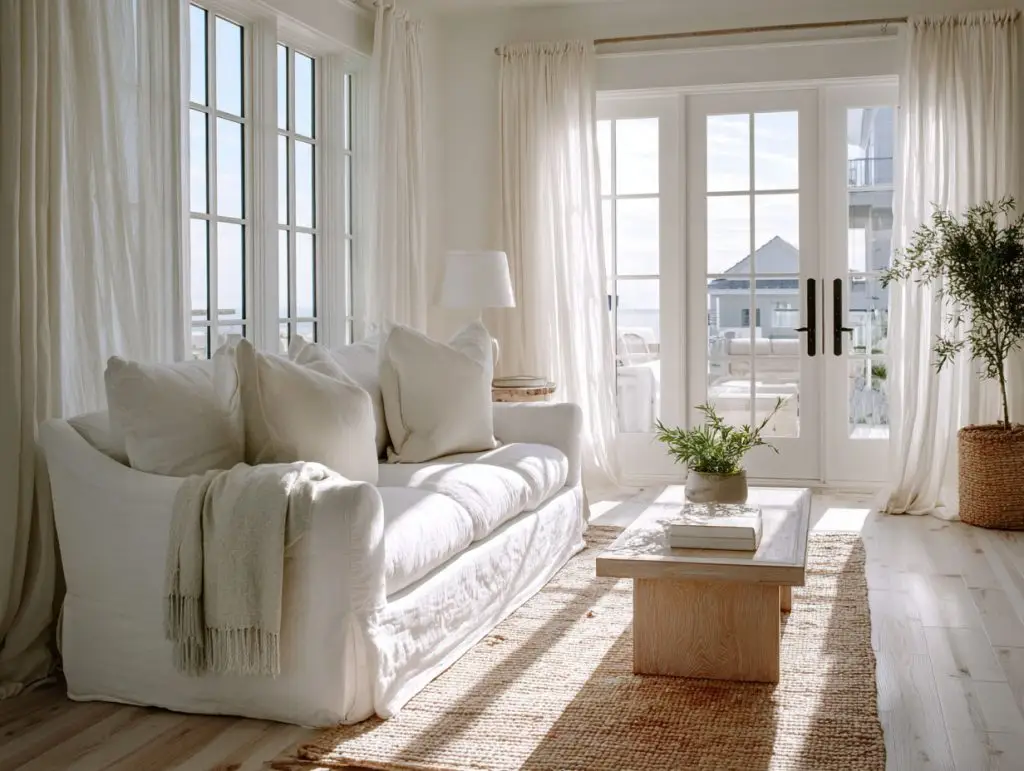
When “Clean” Meant Something Different to Everyone
1. The Moment I Noticed the Pattern
After years of working in homes around Destin — beach rentals, family houses, apartments — I began realizing something odd.
Every client used the same word: “clean.”
But none of them meant the same thing.
One wanted mirrors that looked invisible.
Another cared only about how the house smelled.
A third would walk in, take a deep breath, and say, “It feels good,” even when I could still see sand by the doorway.
That’s when I understood:
Cleanliness isn’t universal.
It’s personal.
2. The Three Kinds of “Clean”
Over time, I started seeing three clear patterns.
- The Visual Clean. These clients want what you can see — spotless glass, aligned towels, floors that reflect light.
- The Sensory Clean. They notice how things feel — airflow, scent, temperature, light balance.
- The Emotional Clean. They sense atmosphere — calm energy, harmony, that invisible ease a home gives off when everything’s quietly in place.
At first, I thought only the first kind mattered — surfaces, order, shine.
But Destin’s air has a way of teaching you: what looks clean isn’t always what feels clean.
3. The Client Who Proved It
I remember a family on Holiday Isle.
They walked into their freshly cleaned home and said it looked perfect — but later texted that something still felt “off.”
I went back the next day to check. Everything sparkled. But the air was heavy, the windows sealed, no circulation.
I opened the sliding doors, let the sea breeze move through, and within minutes the house changed completely.
Same surfaces, same order — just different air.
When they returned, the wife smiled:
“Now it feels clean.”
That’s when I learned: cleaning the home and refreshing the atmosphere are not the same job — but they belong together.
4. The Sharky Standard
At Sharky, we talk about “cleaning for calm,” not just for looks.
That means every task — dusting, vacuuming, drying — ends with a reset of flow.
Fans on low, windows cracked, doors aligned to move air naturally.
It’s not perfection.
It’s balance.
And once you start cleaning that way, every home — no matter how different — ends up speaking the same language:
peace.
The Three Layers of Clean — and How They Work Together
1. Visual Clean — What You See First
This is the surface layer — what catches the eye.
And while it seems obvious, it’s also where most people stop.
What I learned in Destin is that visual cleaning isn’t about brightness — it’s about light behavior.
Coastal light changes everything: morning sun shows streaks, afternoon glare reveals dust, and salt air leaves film overnight.
So I switched from scrubbing harder to cleaning smarter:
- Wipe glass in two directions (vertical inside, horizontal outside) — you’ll see instantly which side streaked.
- Use dry cloth finishes on shiny furniture — humidity will haze it if you leave it even slightly damp.
- Always check from an angle, not straight on — that’s how Sharky trains eyes for “real shine.”
The goal isn’t reflection. It’s clarity.
2. Sensory Clean — What the Air Tells You
You can’t see this one, but you can feel it the moment you walk in.
If the air is heavy, the home feels dirty no matter how perfect the floors look.
So I started treating air as part of the cleaning process:
- Crack windows for 10 minutes before starting.
- Run ceiling fans on low while mopping — it helps surfaces dry faster and prevents that “closed” smell.
- Rotate diffusers or use neutralizers, not perfumes — the scent should fade, not stay.
- Clean A/C vents monthly — humidity plus dust equals that faint, musty undertone that kills freshness.
In coastal homes like Destin’s, freshness isn’t a fragrance — it’s movement.
3. Emotional Clean — What You Feel Without Knowing Why
This one took the longest to understand.
It’s not about tools, it’s about sequence.
If you clean in chaos, the room will keep that energy.
Now I clean in one direction only — left to right, top to bottom, back to front.
It creates rhythm.
No random stops, no circling back.
You can actually feel the space settle behind you as you move through it.
Then comes the finish:
- Step outside for 30 seconds, breathe, and come back in fresh.
- If the space feels calm — you’re done.
- If it feels restless — something’s out of sync. Air, light, or rhythm. Adjust, don’t redo.
That’s what Sharky calls the “final read.”
When It All Comes Together
Now, every home I clean — mine included — runs on those three layers.
What people see, what they breathe, and what they feel all align.
It’s why Sharky’s clients in Destin walk in and pause before speaking.
Because real cleanliness isn’t about shine.
It’s about silence — that quiet moment when the air, light, and space agree.
Read also: The Moment I Stopped Treating Cleaning Like a Chore


